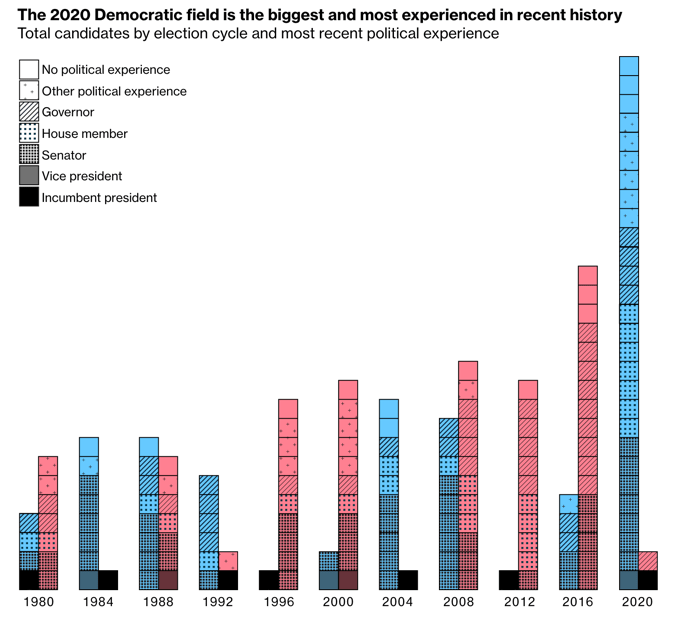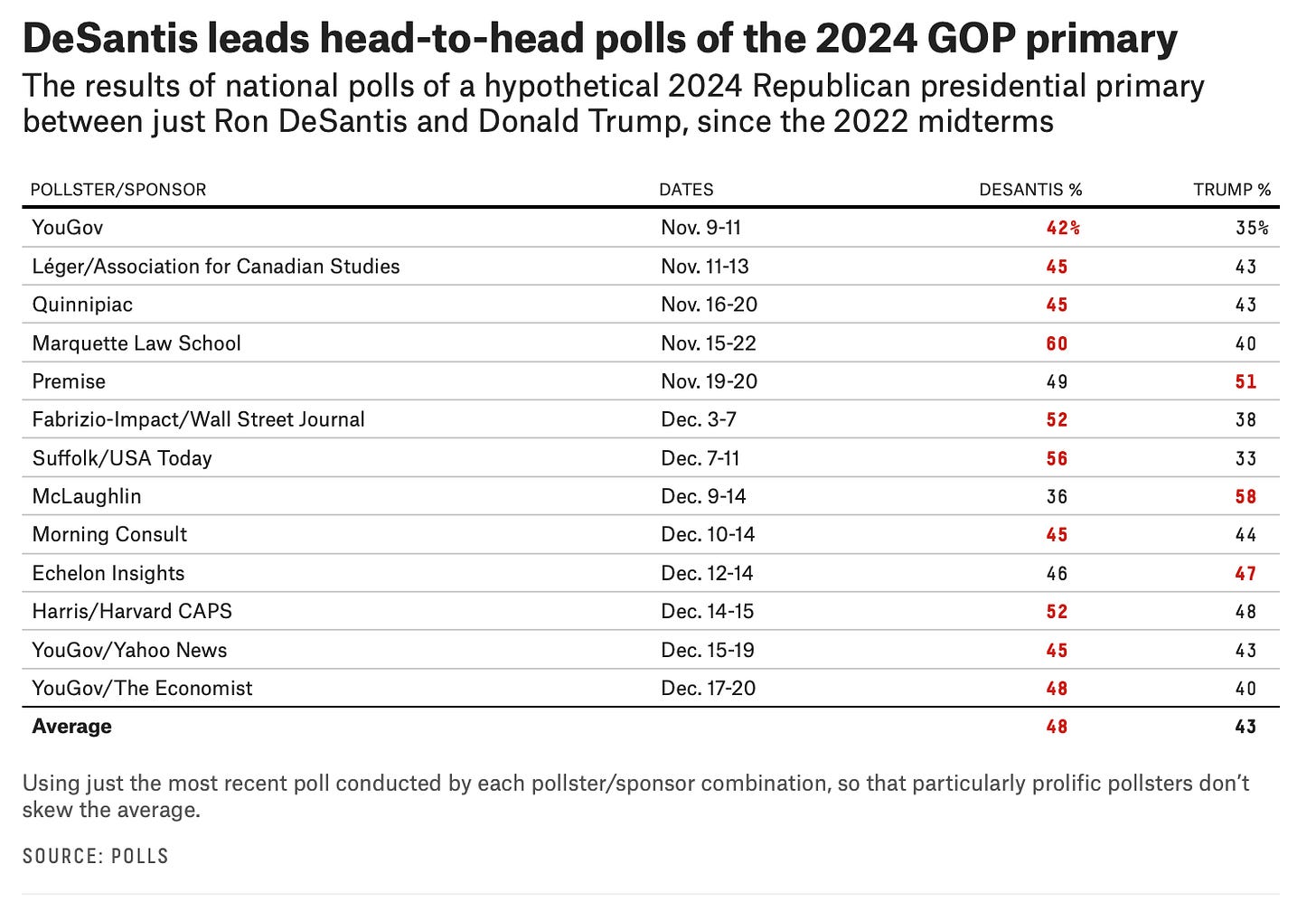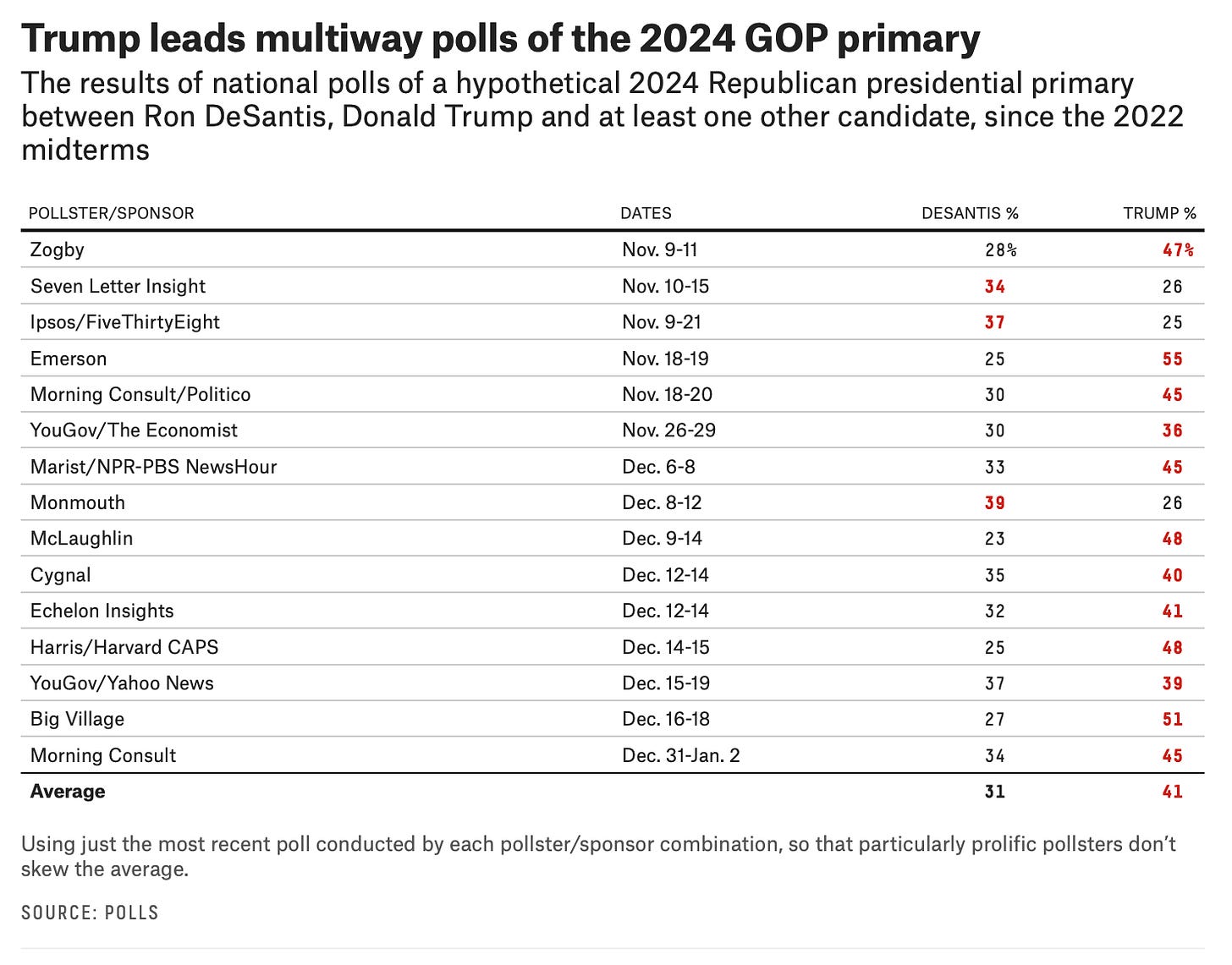The Republican Party's Continuing Collective Action Problem
DeSantis beats Trump head to head, but Trump wins a plurality if anyone else jumps in.
As I wrote in 2020, the Republican Party is no longer a functioning, modern party. To improve their odds of winning the general election, functional political parties introduce discipline into the nomination process, narrowing the field of candidates by controlling access to donors and the debate stage.
Because of the rise of cable news, social media, and crowdfunding, the GOP no longer has much control of the nomination process. As a result, the number of debates and candidates in contested election cycles have risen dramatically since the 1990s.
That reintroduces a classic collective action problem. As the field of candidates swells, it can help a generally unpalatable candidate with the most energetic supporters to win by plurality as long as the majority of voters in opposition are divided among competing candidates.
This is how Donald Trump—although not the choice of a majority of Republican primary voters in any contest until quite late in the season—managed to secure the presidential nomination in 2016. The “anybody but Trump” majority was divided between the likes of Ted Cruz, John Kasich, and Marco Rubio.
Now polling suggests that something similar could happen in 2024. Check out Nathaniel Rakich’s good article for a full account, but the core of the piece can be distilled into two of his charts.
Polling suggests that Republican voters have tired of Trump. In a head-to-head matchup between Ron DeSantis and Donald Trump, DeSantis wins by a healthy 5 point margin (48% to 43%).
However, if *more* candidates than DeSantis enter the contest, then the victor is reversed, giving Trump a 10 point lead with 41% to DeSantis’s 31% .
Notably, that means, once again, that Trump would have skated by on the back of a dedicated plurality of ardent supporters and because of the GOP’s inability to solve its collective action problem.
Now, this suggests two strategies if you’re Trump’s 2024 campaign manager. First, do your best to convince the more popular Ron DeSantis to delay running until ‘28 or ‘32, perhaps offering him the VP spot to buy him off. But, if Ron DeSantis still declares his candidacy later this year, you might encourage other candidates to enter the race in order to divide and conquer the opposition, promising cabinet level appointments in exchange.
In a more extreme scenario, it’s not impossible to imagine a Democratic strategist wanting to send support via back channel to alternative GOP candidates to help Trump beat the better-polling DeSantis, improving Biden/Harris’s odds in the general election. Against Trump, Biden leads by 7%. But against DeSantis, Biden trails by 3%.
If that sounds far-fetched—and even I wouldn’t call it likely or practicable—consider that the Democratic Party spent tens of millions of dollars backing far right Republican primary candidates in the 2022 midterms hoping to draw a weaker opponent in the general. And it generally worked. Thereby illustrating much that is perverse about our current political incentives.





